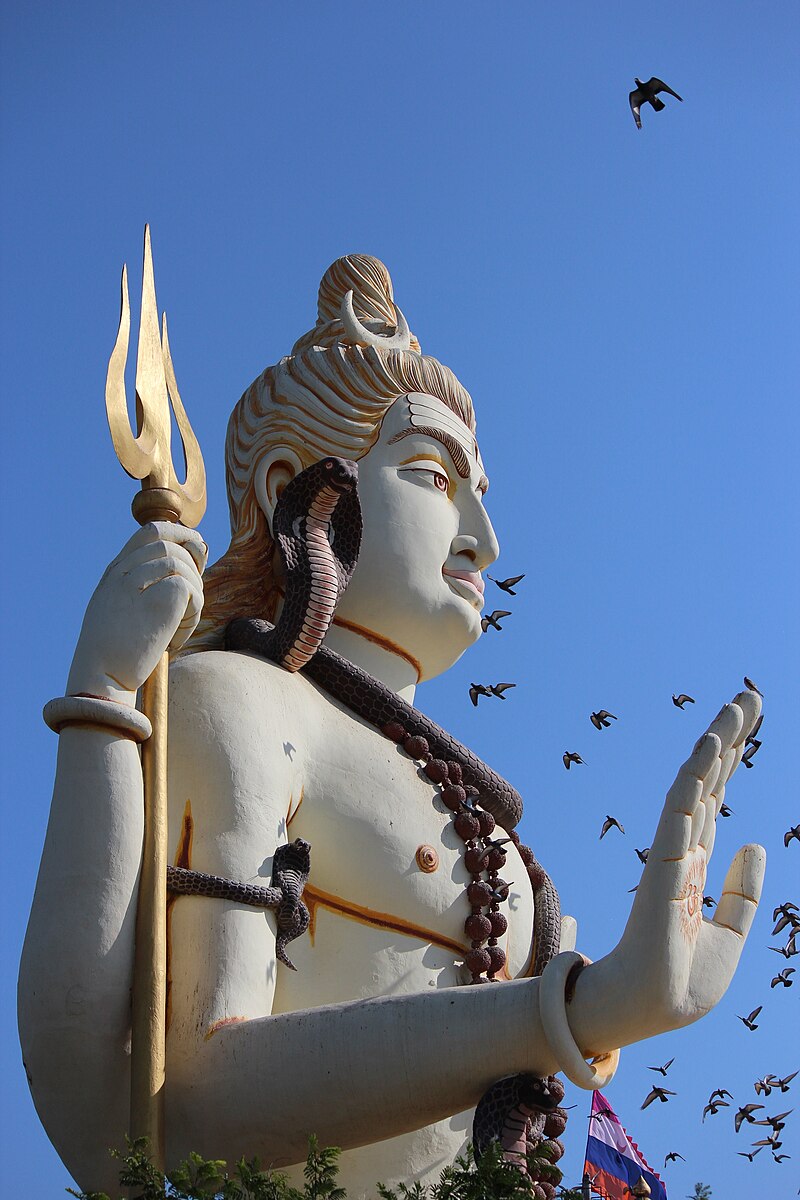
Following class on 21 March, I was extremely interested in learning more about the traditions, culture, and reasoning behind Hindu beliefs. I went online and found two articles, both in Huffpost Religion, that gave me some perspective on Hindu beliefs as well why a type of Eastern/Western blend of a religion can occur.
The first article I found was on another Hindu practice, the celebration of Maha Shivaratri (or Shivratri). This is a festival celebrated by Hindu’s worldwide, in which the god Shiva (commonly held to be the lord of cosmic destruction and dance) is glorified and worshiped. Night vigils, fasting, special prayers, and other forms of worship are done and many symbols of religious tradition are erected. The most value to me, as a man uneducated in the background of many Hindu beliefs, was a section that described why the celebration was occurring and how it was so important to those who partook in it. I highly recommend you read the article, and do some additional background research on Shivratri; it really is fascinating and I don’t regret spending time learning about it.
In the sidebar of this article was another suggested read: “Harvard Launches Free Online Class to Promote Religious Literacy”. Interested, I clicked on this article and learned that this course is designed to counter religious stereotypes and promote and understanding of religious traditions and the importance they play on the lives of the religion’s followers. Essentially, this course focuses on the “Why” behind religious traditions but in a way that is comprehendable to a student unfamiliar with the culture or root traditions.
Reading this article brought me back to our class discussion of American Hinduism, and how religion plays a key role in determining the lifestyle of many Americans. We discussed in class that it is very possible that “Eastern” religions can become “more Western” because of American culture, and how a type of blending can occur. This blending can occur because of a variety of reasons; one reason is so that those who already have lived in the West or who are “Americanized” can, with greater ease, understand the “why” behind religions traditions.
It took me a while to comprehend Shivratri because of several reasons: 1) I wasn’t born and raised in a culture that would teach me the reasonings behind the tradition, 2) I have less understanding in the root reasonings behind the “why” of Hindu traditions (for example, many articles I found say that Shiva is often worshiped as a Lingham, but fail to explain what it is or why it in particular represents Shiva) and 3) I’ve never experienced such a festival for myself and thus have no real-world knowledge beyond what I research. I can only imagine if I was born and raised in the U.S., and then attended Shivratri without any prior knowledge. That’s where I believe the blending of East/West comes into play; it gives people living in the West a taste of the traditions and culture of Hinduism, without being confusing to the point of turning them away. Furthermore, it’ll come as less of a culture shock and slowly integrate a new devotee into the fold of the religion, giving them more time to fully understand the context behind traditions, festivals, religious texts, etc.
I’m far from an expert on why a blending of East/West occurs in the U.S., but from what I’ve read and what we discussed in class, this appears to me as being a primary reason for the blending and its effect on new worshipers living in the U.S.
V/R,
Colton McCoy
Shivratri: http://www.huffingtonpost.com/entry/maha-shivaratri-2016-the-great-night-of-lord-shiva_us_56ddcdfae4b03a4056795bf1?utm_hp_ref=religion
Harvard: http://www.huffingtonpost.com/entry/harvard-world-religions-online-class_us_56c76b55e4b041136f16dd0a?utm_hp_ref=hinduism
It is interesting to see this type of blending occur in a variety of religions. Since there is a lot of history to this religion and many Americans are not familiar with Hinduism and their practices, your explanation of how it is being introduced into the West makes sense. It could also be that the people who practice Hinduism in American are becoming more Westernized themselves, creating a religious blend.
LikeLike